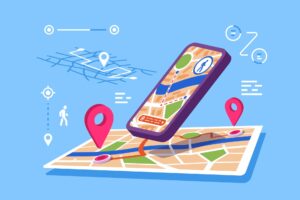Introduction
As the world’s urban population continues to grow, the demand for efficient, sustainable, and livable urban environments has never been greater. Smart cities, which leverage advanced technologies to enhance the quality of life for residents and streamline urban services, offer a promising solution to this challenge. This article aims to provide a professional and easily understandable explanation of smart cities, their key components, and how they can help create a more sustainable, connected, and resilient future.
Understanding Smart Cities
A smart city is an urban area that integrates advanced technologies, such as the Internet of Things (IoT), data analytics, and artificial intelligence (AI), to improve the efficiency of city services, enhance the quality of life for residents, and promote sustainable urban development. By connecting various systems and devices, smart cities can collect, analyze, and use data to make informed decisions, optimize resource use, and reduce environmental impacts.
Key Components of Smart Cities:
- Connectivity and IoT: A smart city relies on a robust network infrastructure and IoT devices to collect and transmit data. These devices can include sensors, cameras, and smart meters, which gather information on various aspects of city life, such as traffic, air quality, and energy consumption.
- Data management and analytics: Smart cities use advanced data analytics and AI algorithms to process the vast amounts of data collected by IoT devices. This enables city officials to make data-driven decisions and develop more effective policies and initiatives.
- Smart infrastructure and utilities: Smart cities employ advanced technologies to optimize the efficiency and sustainability of urban infrastructure and utilities, such as energy, water, and waste management systems.
- Intelligent transportation systems: Smart cities use technology to improve traffic flow, reduce congestion, and enhance public transportation, creating more efficient and sustainable urban mobility.
- Public safety and security: Smart cities leverage technology to enhance public safety and security through advanced surveillance systems, emergency response coordination, and disaster management.
- Citizen engagement and e-governance: Smart cities promote transparency and encourage citizen participation by providing accessible digital platforms for communication, feedback, and civic involvement.
Potential Benefits of Smart Cities:
- Enhanced quality of life: By streamlining city services, improving public safety, and promoting sustainable development, smart cities can create a more livable and enjoyable urban environment for residents.
- Resource efficiency: Smart cities can optimize resource use through data-driven decision-making, reducing waste and promoting sustainability.
- Economic growth: Smart cities can attract investment, foster innovation, and create new job opportunities by leveraging advanced technologies and developing a skilled workforce.
- Environmental sustainability: By promoting sustainable practices, such as energy efficiency, renewable energy, and waste reduction, smart cities can contribute to the global effort to combat climate change.
- Resilience and adaptability: Smart cities can use data and technology to anticipate and respond to challenges, such as natural disasters, infrastructure failures, or public health crises.
Challenges and Future Outlook
Despite their potential benefits, smart cities face several challenges, including high implementation costs, data privacy concerns, and the need for effective collaboration among various stakeholders. However, as technology continues to advance and the demand for sustainable urban solutions grows, smart cities are expected to play an increasingly important role in shaping the future of urban living.
Conclusion
Smart cities offer a promising pathway to create more efficient, sustainable, and livable urban environments by harnessing advanced technologies and data-driven decision-making. As we continue to explore and develop smart city solutions, we can expect to see significant improvements in the way our cities function and the quality of life they provide for their residents. By embracing the potential of smart cities and addressing the challenges they face, we can create a more connected, resilient, and sustainable future for urban dwellers around the world.











